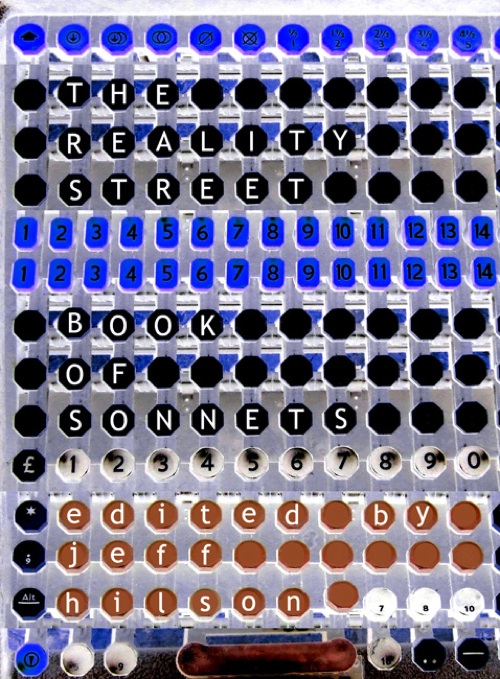On The Innovative Sonnet
If you're sitting in a cafe near a graduate school working on your sonnet sequence, this one's for you. UK poet Robert Sheppard has been writing about the innovative sonnet on his poetics blog for a while now. Today, he's got a new post, entitled "Ending, with strong pressure towards epigram or witticism." Though this seems to start in medias res, it's quite readable, and you should check out his other posts on the topic, too.
Today's post features some thoughts on THE REALITY STREET BOOK OF SONNETS, edited by Jeff Hilson, and on the contemporary sonnet more generally:
I have argued that the chief influences upon the contemporary innovative sonnet include the examples of Berrigan and Raworth, the radical conceptualism of Oulipo with its use of tailored ‘constraints’, and the postmodernist release of the form from the repression of modernism. I may be confused in this, having identified these also as influences on my own sequence. But there can be no doubt that there is another influence, post 2008, and that is The Reality Street Book itself. Hilson’s sequence was co-terminous with its production, indeed mentions it. Other sequences, possibly Monk’s, were written as the event of the anthology appeared on the horizon. Terry’s sequence missed the boat, having come to Hilson’s attention after Ken Edwards declared the hold full. Many sonnets (sequences or singles) have appeared after; Anthony Mellors’ The Gordon Brown Sonnets (2009), for example, continues the political edge found in so many of these sequences; Milton is the god of the innovative sonnet, not Shakespeare.
A mere flick through the anthology reveals visual sonnets, ghost sonnets where the shape of the sonnet is played with, along with others that expose the frame of the form, as outlined in part twelve of this lecture. There are prose sonnets, fairly conventionally lineated sonnets, Chinese sonnets and non-sonnets, some in sequences, many not, many more than I have time to deal with today. Anybody embarking on a sonnet today has the benefit of the anthology as a textbook of form(s). There are dangers in this, of imitation and derivation, rather than influence and deviation, of mere production, of ever-thinning effect and affect (or affectlessness), but these have been dangers throughout literary history of the prominence of any form. The same could have been said of Tottel’s Miscellany in 1560 which gave the world the exemplars Wyatt and Surrey.
I’m not bold enough to call time on the innovative sonnet, to declare that we have reached our 1610 – imagine declaring the whole show over in 1608, what a difference a year makes! – but I wonder what forms will emerge next.
Read the entire post (and others) here; and to circle back, listen to Ted Berrigan reading The Sonnets (scroll down), or read more about the sonnets of Tom Raworth.



